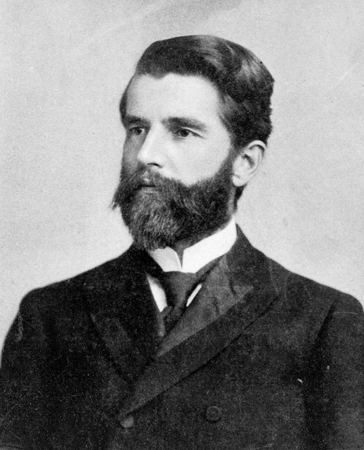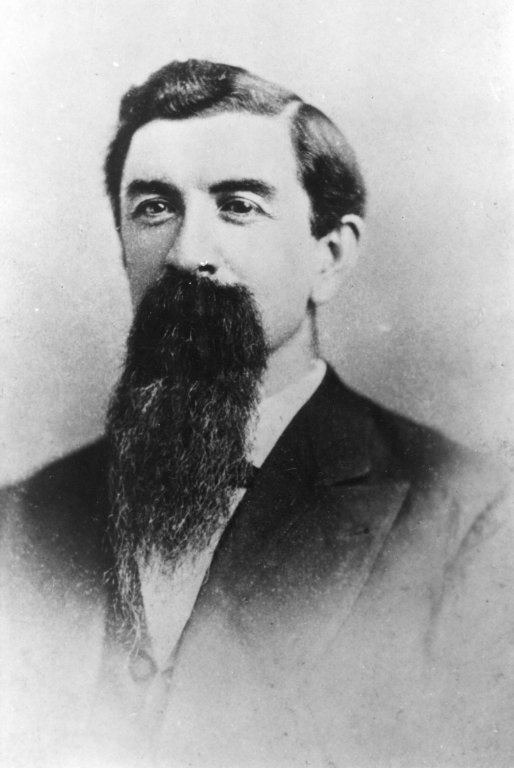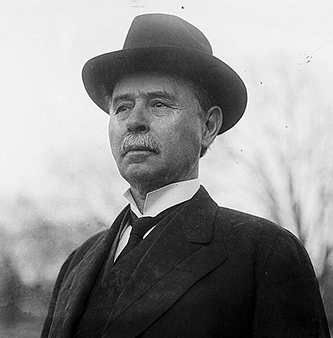The election of 1898 marked a turning point in the history of North Carolina. In the years leading up to the election there were three active political parties vying for the support of the state's electorate, and African Americans had a significant role in state politics, both as officeholders and voters. After 1898, all of that would change. The political landscape through most of the twentieth century was affected by issues and policies raised in the campaign of 1898.
After the Civil War, the Republican Party rose to power in North Carolina. Many former Confederates were prohibited from voting, while newly enfranchised African Americans and whites who had sympathized with the Union flocked to the Republican Party, still viewed as the party of Abraham Lincoln and emancipation.
As former Confederates and Whigs began to come back into the political process, they formed the Conservative Party, which opposed federal intervention in state affairs and spoke out against the so-called "radical" reconstruction policies of the U.S. Congress. The Conservatives, who would later change their name to the Democratic Party, took control of the North Carolina General Assembly in 1870 and began to reverse some of the changes enacted by Reconstruction-era Republicans. In 1876, popular Civil War governor Zebulon Vance was returned to the state's highest office. In the eyes of many white North Carolinians, the state had been "redeemed."
When North Carolina, like much of the rest of the nation, was mired in a severe economic depression in the 1880s, the small farmers in the state were hit the hardest. The poor infrastructure in the state made it difficult for them to get their goods to market, and, when they did, they thought that they were not given a fair price by buyers. To compound their problems, many farmers felt that neither of the two major political parties had their best interests at heart.
The national Farmers Alliance, an organization of farmers advocating for cooperatives and economic reform, spawned smaller organizations throughout the country, with an active branch in North Carolina. The "alliancemen" were active supporters of the new People's Party, also known as the Populist Party, led nationally by North Carolinian Leonidas LaFayette Polk.
The Populists ran several candidates in the 1892 election in North Carolina and the results were surprising. While few of their candidates were elected, they did receive a significant number of votes. In fact, the Populist vote combined with the Republican vote was greater than that for the Democrats. While the Democratic party still controlled the government, they no longer represented the majority of voters.
In 1894, the Republicans and Populists negotiated an agreement in which, instead of running competing candidates for statewide offices, they would divide the ticket between the two parties. This cooperative arrangement was known as "fusion." It worked. The fusion candidates defeated the Democrats throughout the state, winning a majority in the legislature. Populist leader Marion Butler and Republican Jeter Pritchard were elected to the U.S. Senate. Once in control, the fusion government enacted a series of reforms, including a more liberal election law -- which would make it easier for North Carolinians to vote -- and a restoration of "home rule," allowing elections of local officials in several eastern North Carolina counties where they had previously been appointed by the state. In 1896 the parties fused again, retaining control of the legislature and electing Republican Daniel L. Russell governor. While other states experimented with fusion arrangements, nowhere was it as successful as in North Carolina.
After two successful campaigns, cracks in the fusion relationship began to show. Although the Republicans and Populists shared common interests in electoral reform and local self-government, these issues had already been addressed, and some Populists were uncomfortable joining with a party that did not support increased coinage of silver and was so closely associated with African Americans. The state Populist leadership, in fact, felt that they had more in common with the Democrats and actually proposed a fusion agreement with them in 1898. However, when the Democrats refused, both the Populist and Republican leaders realized that the only way they could continue to hold power was through fusion and they agreed to run together again.
As the election of 1898 got closer, the Democrats scrambled to come up with a new strategy to regain power. Furnifold Simmons, who had successfully run the 1892 campaign for the party, was appointed party chairman and charged with managing the campaign. Simmons was a successful organizer with a keen knowledge of state politics. He organized a speakers bureau, sending talented orators who were sure to stay on message to all parts of the state, and he helped to establish local political organizations in each county. But perhaps Simmons's most important contribution to the campaign would be the decision to focus nearly all of the party's campaign efforts on a single issue: white supremacy.
The "white supremacy campaign" was exactly that. The Democrats repeatedly stated that only white men were fit to hold political office. They often accused the fusionists, especially the Republicans, of supporting "negro domination" in the state. Indeed, there were a large number of African American officeholders, some of whom had been elected and many more who were appointed to office. The Democrats referred to themselves as the "white man's party" and appealed to white North Carolinians to restore them to power.
One of the most significant events of the campaign was the appearance of an editorial in the Wilmington Daily Record on August 18, 1898. The Daily Record was an African American newspaper published by Alex Manly. The editorial was a response to a speech by a Georgia woman who had called for the widespread lynching of African American men in order to protect white women. The Daily Record suggested that consensual relationships between African American men and white women were common and that often the man was accused of rape only after the relationship was discovered. Once the Democratic papers got hold of the editorial there was an uproar. Under headings such as "Vile and Villainous" and "A Horrid Slander," the editorial was reprinted throughout the state. Some Democratic papers continued to run it in almost every single issue up to election day.
The effect of the Daily Record editorial and the success of the repeated cries for white supremacy by the Democrats left their opponents reeling. The Republicans tried to focus on electoral reform and fair government, while the Populists ended up on the defensive, eventually trying to assume the white supremacy issue for themselves. Populist newspapers such as the Progressive Farmer and Caucasian ran cartoons and editorials criticizing the Democrats for appointing African American officials and arguing that the Populists were in fact the true "white man's party." But it was all of no use. Simmons ran a masterful campaign, with racial issues dominating the discourse all the way through.
Toward the end of the campaign, perhaps worried that speeches and editorials would not be enough to ensure victory, the Democrats increasingly resorted to the threat of violence. At several rallies in southeastern North Carolina, large groups of men dressed in red shirts and openly brandishing weapons rode through predominantly African American neighborhoods in an effort to scare potential Republican voters away from the polls. The "Red Shirts" were a campaign strategy borrowed from South Carolina Senator Ben Tillman, who appeared at several rallies on behalf of the North Carolina Democrats.
On election day, November 8, 1898, the Democrats were returned to power. They won a majority of the seats in the legislature and quickly began work on legislation that would effectively disfranchise African American voters for decades to come. The effects of the election were lasting. After Daniel Russell left office in 1900, North Carolina would not elect another Republican governor until 1972. George White, an African American who was elected to Congress from a predominantly African American district in 1898 was the last African American elected to that body until 1928. North Carolina would not send another African American to Washington until 1992.


